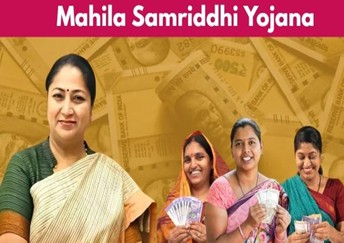Delhi’s Unified Data Hub to Streamline Welfare Access
Delhi’s Unified Data Hub to Streamline Welfare Access
Why in the News ?
The Delhi government is set to launch a Unified Data Hub (UDH) to create verified “golden records” of beneficiaries. This initiative aims to prevent duplication and ensure that only eligible residents receive welfare benefits, including the upcoming Mahila Samriddhi Yojana.
Unified Data Hub: Objectives and Design
- UDH will consolidate data from all government departments into a centralised repository.
- Aims to generate “golden records”—single, verified, and de-duplicated data profiles of citizens.
- Will help track profession, benefits, and services availed, enabling accurate identification of beneficiaries.
- Data will be updated in real-time by authorized departments.
- Designed to prevent multiple claims and leakage of welfare benefits.
Implementation Strategy and Technological Framework
- Being developed by the IT Department to enhance citizen-centric governance.
- A unique identification number will be issued per citizen and linked to all departmental records.
- Household IDs will also be generated using Aadhaar or ration card linkage.
- Data from departments like Food & Supplies, Revenue, and Principal Accounts Office is already being integrated.
- A dashboard and report system will support evidence-based policy decisions.
Welfare Verification and Impact
- Will be used to verify eligibility for schemes like the Mahila Samriddhi Yojana (₹2,500 for women).
- Recent checks found 5,621 government employees with ration cards and 25,000 ineligible women receiving pensions.
- Aims to exclude non-residents, including Rohingya and Bangladeshi migrants, from Delhi’s welfare net.
- The government will initiate recovery actions where benefits were wrongly claimed.
Mahila Samridhi Yojana (MSY) – Key Points● Implemented by: State Channelizing Agencies (SCAs), Regional Rural Banks (RRBs), and Nationalized Banks. ● Target Beneficiaries: Safai Karamcharis, Scavengers, and their dependents. ● Purpose: Financial support for small trades, petty businesses, and other income-generating activities. ● Maximum Project Cost: Up to ₹1,00,000 per beneficiary. ● Loan Coverage: 90% of the project cost is financed as a loan. ● Remaining 10%: Funded by SCAs as loan, subsidy, or through other available sources. ● Objective: Empower marginalized communities, promote self-reliance and ensure socio-economic upliftment of the beneficiaries. |




